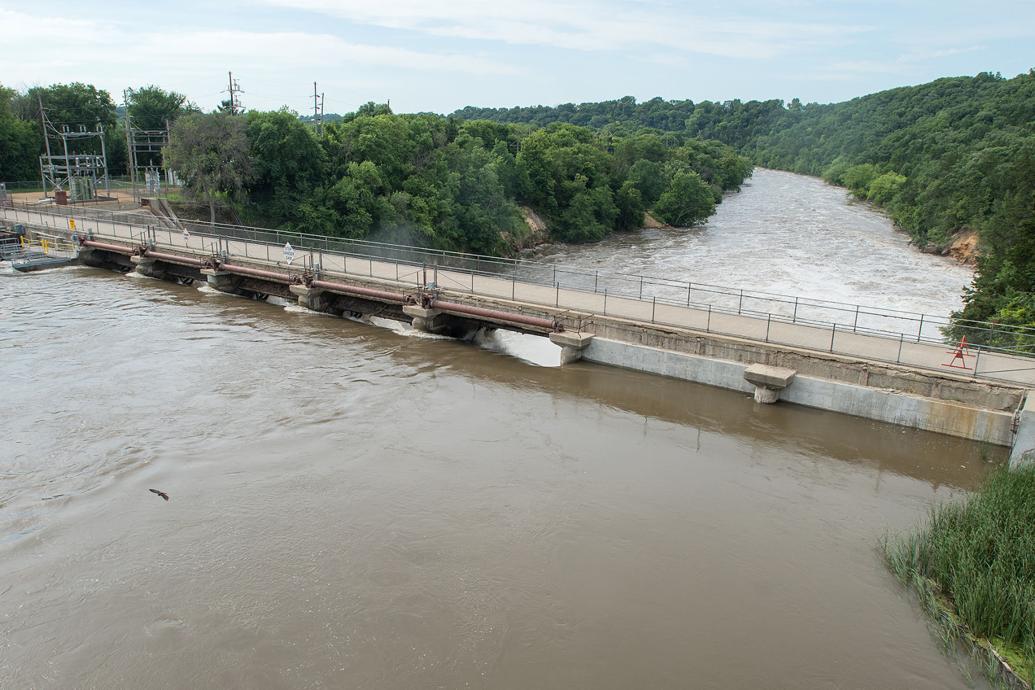Historical Context and Background: Mankato Dam Failure
The Mankato Dam, a critical structure impounding the Blue Earth River in Minnesota, played a significant role in the region’s development and faced a catastrophic failure in 1998. The dam’s construction commenced in 1938 as part of the Works Progress Administration (WPA) initiative during the Great Depression. Its primary purpose was to control flooding, generate hydroelectric power, and provide recreational opportunities.
Engineering Design and Construction
The dam’s design incorporated a concrete gravity structure with a central spillway and six tainter gates. The construction utilized local limestone and involved extensive excavation and concrete placement. Despite the dam’s robust design, concerns emerged regarding potential seepage and foundation stability issues. These concerns were partially addressed through grouting and drainage measures.
Environmental and Social Impact
The dam’s construction and operation significantly impacted the surrounding environment and local communities. The impounded water created Lake Washington, a popular recreational destination, while also altering the river’s natural flow and sediment transport. The dam’s presence led to changes in aquatic ecosystems and affected downstream communities dependent on the river’s resources.
Causes and Contributing Factors

The catastrophic failure of the Mankato Dam was a complex event with multiple contributing factors. This section analyzes the technical failures, natural disasters, and human errors that led to the dam’s collapse.
Technical Failures, Mankato dam failure
The dam’s structural design was inadequate to withstand the pressure of the impounded water. The earthen embankment was not sufficiently reinforced, and the spillway was too narrow to handle the volume of water during heavy rainfall. These design flaws created weaknesses that ultimately led to the dam’s failure.
Natural Disasters
Heavy rainfall in the days leading up to the dam’s collapse saturated the ground and weakened the earthen embankment. The intense precipitation exceeded the capacity of the spillway, causing water to overtop the dam and erode its structure. The natural disaster of excessive rainfall played a significant role in exacerbating the dam’s technical failures.
Human Errors and Negligence
Human errors and negligence also contributed to the Mankato Dam failure. The dam’s operators failed to properly monitor the water levels and adjust the spillway gates accordingly. Inadequate maintenance and inspections allowed structural deficiencies to go undetected and unaddressed. These human factors compounded the technical and natural challenges, ultimately resulting in the dam’s catastrophic collapse.
Aftermath and Legacy

The Mankato Dam failure triggered an immediate response from local authorities, emergency services, and volunteers. Rescue efforts were swiftly deployed to save lives and assist the affected communities. Damage assessment teams were dispatched to evaluate the extent of the destruction and coordinate recovery operations.
The long-term consequences of the dam failure were devastating. The loss of life and property was immense, leaving a lasting impact on the region. The environmental degradation caused by the release of contaminated water into the Blue Earth River had far-reaching effects on the local ecosystem and water quality.
Lessons Learned
The Mankato Dam failure served as a stark reminder of the importance of dam safety regulations and practices. The lessons learned from this tragedy have been incorporated into modern dam design, construction, and maintenance protocols. Regular inspections, risk assessments, and emergency preparedness plans are now essential components of dam management to prevent similar disasters from occurring in the future.
The Mankato Dam failure, a catastrophic event that claimed lives and devastated infrastructure, stands as a grim reminder of the destructive power of water. Like a tragic echo, the Rapidan Dam break , though smaller in scale, also left an unforgettable scar on history.
Yet, amidst the wreckage, the indomitable spirit of communities rose, demonstrating the resilience of the human spirit in the face of adversity.
The Mankato Dam failure, a tragic event in Minnesota’s history, highlights the importance of dam safety. To delve deeper into this topic, explore rapidan dam mankato mn for insights into dam construction and maintenance. Understanding the factors that contributed to the Mankato Dam failure can help prevent similar tragedies in the future.
The Mankato Dam failure, a catastrophic event in 1938, left a lasting scar on Blue Earth County. The dam’s collapse unleashed a torrent of water that ravaged the county, leaving behind a trail of destruction. The impact of the failure extended far beyond the immediate aftermath, shaping the county’s history and landscape for generations to come.
The Mankato Dam failure of 1998 stands as a sobering reminder of the devastating consequences that can result from structural failures. This incident, which claimed the lives of five people and caused extensive property damage, highlights the importance of proper dam maintenance and inspection.
For more information on dam failures in Minnesota, visit dam failure minnesota. The Mankato Dam failure serves as a cautionary tale, underscoring the need for vigilant monitoring and proactive measures to prevent future tragedies.
The Mankato Dam failure, a somber reminder of the fragility of human structures, stands in stark contrast to the enduring strength of nature. However, a lesser-known dam in Minnesota, the rapidan dam in minnesota , serves as a testament to the resilience and innovation that can arise from adversity.
Its existence, a beacon of hope amidst the scars of the Mankato Dam failure, speaks to the indomitable spirit of humanity.